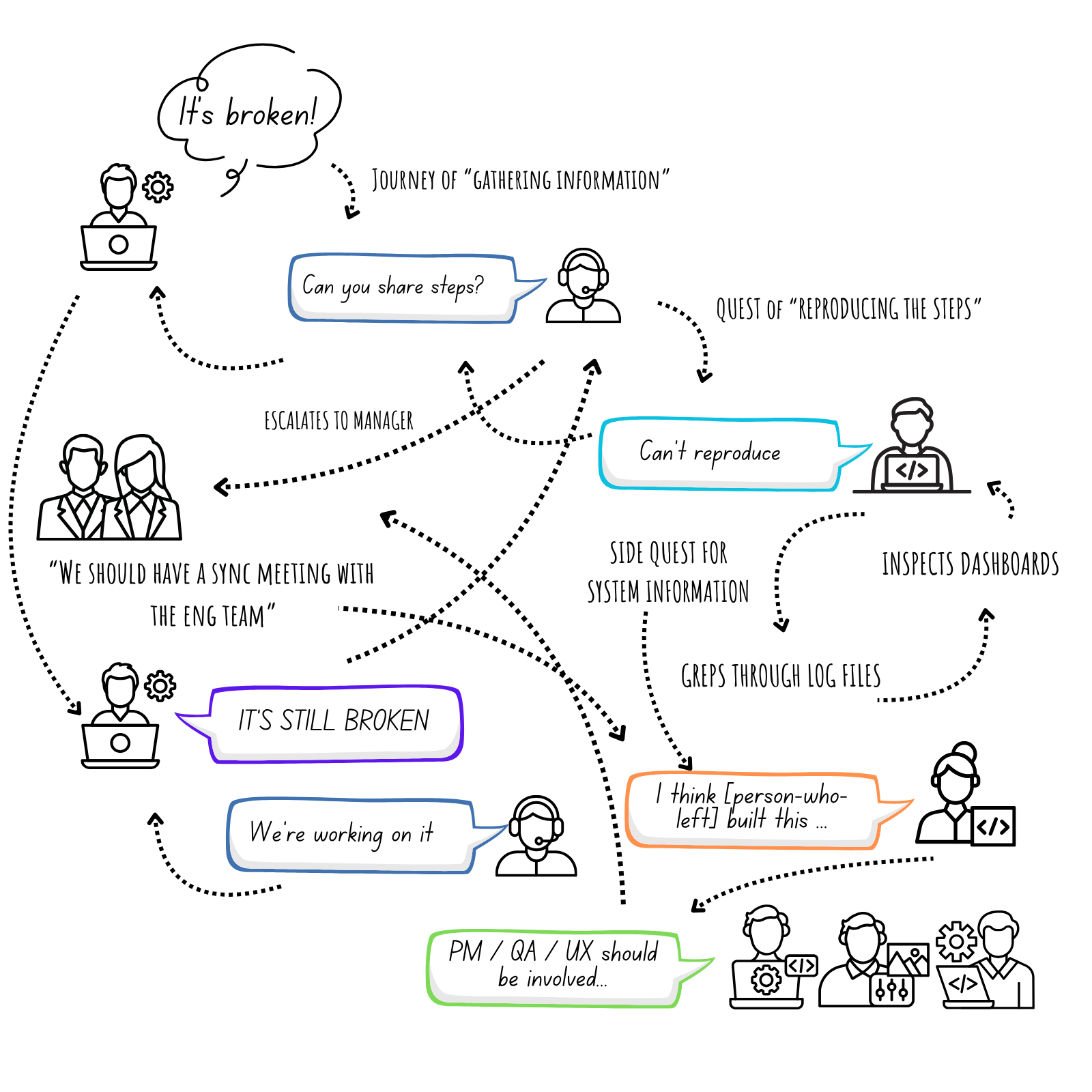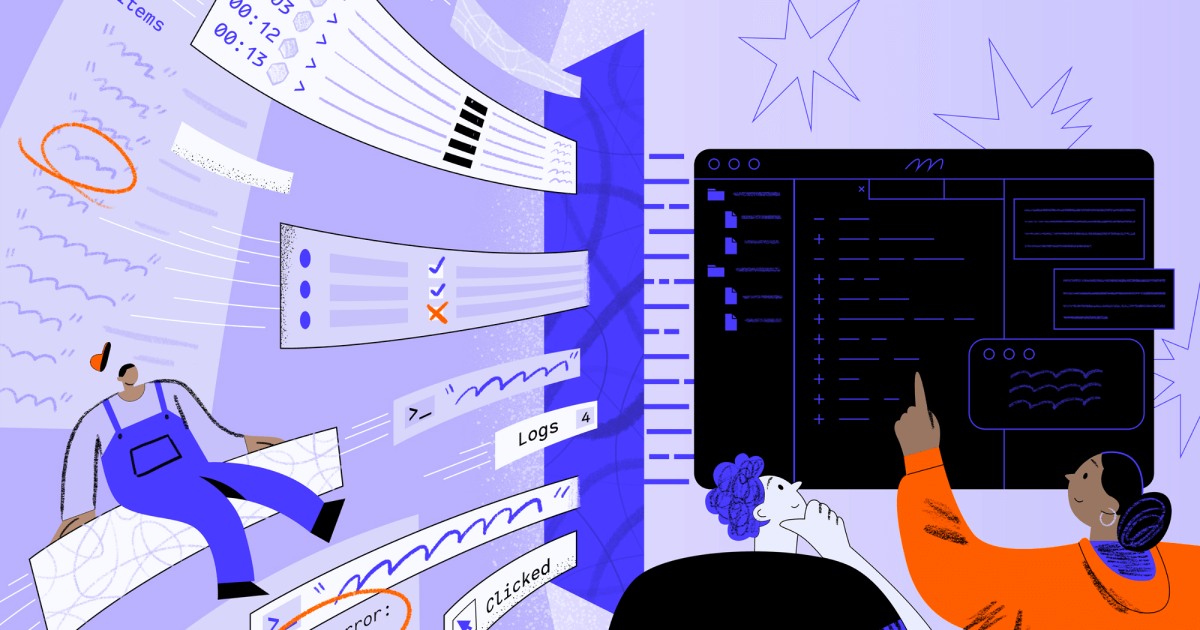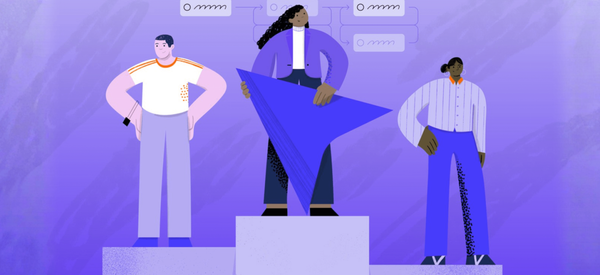High user satisfaction scores aren’t worth a burned-out team
Multiplayer transforms the chaos of support tickets, eliminating manual work, sloppy hand-offs, and grepping through log files.

End-user support has always been messy. Manual steps, tool-switching, and scattered communication turn what should be a simple fix into a marathon of frustration.
Tickets feel like scavenger hunts: everyone’s searching for details, logs, screenshots, or that missing repro step.
Developers are left waiting on context that never arrives.
Support teams spend hours chasing updates across email threads and Slack channels.
And when context lives across ten tools, nobody gets the full story.
The result? High user satisfaction scores on paper and burned-out support and engineering teams behind them.
The usual support workflow
We’ve spoken with many of our users and they usually describe a support workflow that takes a multi-person, multi-email, multi-tool journey throughout their organization.
Here’s what “good” support often looks like in practice:
- User reports an issue. A user reports an issue. Some companies have one ticketing system, others accept chat, email, bug forms, even social DMs. The same problem can arrive through multiple channels, which already splits the context.
- End-user <> Support back-and-forth. The first ticket rarely contains everything a Support Engineer or Developer needs to fully understand the problem. You might get a symptom, a screenshot, or “it’s slow”. Support starts a back-and-forth to collect the missing pieces: steps to reproduce, browser and device, account, exact time, error messages. This can take hours or days as people reply in different time zones or forget details.
- Handoff to engineering. With partial context gathered, Support passes the ticket along. Engineering reads the summary, opens the attachments, and tries to map the user’s description to how the system actually works. In many instances, reproduction attempts fall short: something is still missing, so developers need to ask Support for more info, or they go hunting for more details on their own.
- Side quests multiply. Engineers search logs, traces, dashboards, and metrics. They check feature flags, versions, deployments, and documentation. They ask teammates if anyone touched that part of the system. Context is scattered across tools and people, which slows everything down.
- Ticket escalations. While Engineering investigates, the customer grows impatient and escalates to the Account Executive or to leadership. Inside the company, the ticket rises to Senior Engineers and other teams. Meetings are scheduled to “sync on status,” which consumes time without adding new facts.
- Stakeholder pile-on. Product, CS, QA, UX, and Sales all weigh in, each bringing partial data or new questions. Information fragments across email, Slack, comments, and docs. Keeping track of what is known becomes a task of its own.
Sometimes this results in user churn. Many times, however, the story appears to end well!
The customer finally gets the solution to their problem, leaves a nice review, maybe even a five-star CSAT (customer satisfaction) rating. On paper, it’s a success: the ticket is closed, the metrics look good, and everyone moves on.
But underneath, there’s a quiet cost. The team lost hours chasing context instead of solving problems. Engineers spent more time coordinating than coding. Support burned emotional energy just keeping the process afloat. And none of that shows up on your dashboards.
Is this type of “great support” sustainable?
What happens when your user base doubles, or when the engineering roadmap shifts and the same few people can’t jump on every urgent ticket? How do you maintain speed and quality without burning through your team’s time — and energy — every time an issue hits production?
A high CSAT score is easy to celebrate. But if it comes at the expense of your team’s focus, efficiency, and well-being, it’s not a sign of healthy support.

The solution
Multiplayer transforms the chaos of debugging and support workflow. We do this through full stack session recordings: complete, correlated replays that capture everything from the frontend to the backend.
That includes:
- User actions, on-screen behavior, clicks, and comments
- Frontend data: DOM events, network requests, browser metadata, HTML source code
- Backend traces with zero sampling, logs, request/response content, and headers
- CS, developer, and QA annotations, comments, and sketches
Instead of scattered tooling and guesswork, Multiplayer gives you one replay that tells the whole story: what happened, why it happened, and how to fix it.

Support engineers get clarity instead of chaos
Instead of chasing screenshots and guessing what really happened, support engineers open a ticket and see the full story: user actions, backend behavior, and all the technical details automatically captured.
No scavenger hunts, no Slack threads, no “please send more info.” Just instant visibility and a single source of truth everyone can work from.
They get:
- Automatic issue capture the moment something goes wrong
- A clear replay of user actions, clicks, and feedback
- A single shareable link for cross-team collaboration, complete with on-screen sketches, notes, and context
Developers get everything they wish every ticket included
By the time an issue reaches the Engineers, it already includes everything they need to reproduce and fix it. Multiplayer captures frontend and backend data, correlates it by session, and makes it available directly inside their IDE or AI tools.
No more grepping through logs or asking for repro steps. Just open the session, see what happened, and fix it.
They get:
- High-fidelity repro steps with full visibility into cause and effect
- Complete, unsampled full-stack data that’s already AI-ready
- Support for any language, environment, or architecture
Users get faster fixes and smoother experiences
From the user’s perspective, the magic is simple: they report an issue once, and it gets resolved quickly and accurately.
No endless email loops. No repeated questions. Just responsive, reliable support that feels effortless.
They get:
- Easy issue reporting through browser extension or in-app widget
- Fast, accurate resolutions even for rare, intermittent, or hard-to-reproduce bugs
- A better in-app experience, because every fix is grounded in real user data
Why it matters
When Support and Engineering are on the same page, everything moves faster. Users feel heard, Support teams stop chasing screenshots, and Developers can finally focus on building instead of firefighting.
Multiplayer was built for that kind of alignment: turning fragmented communication into shared understanding. We:
- Eliminate incomplete bug reports and endless back-and-forth
- Give every team the same full-stack context from the start
- Speed up escalations and shorten resolution time
- Surface root causes in minutes instead of hours (days?)
- Improve overall product quality with every fix
With Multiplayer, the session itself becomes the common language between end-users, Support, and Engineering.
No lost context. No burnout. Just clear visibility, faster fixes, and teams that can finally breathe again.
👀 If this is the first time you’ve heard about Multiplayer, you may want to see full stack session recordings in action. You can do that in our free sandbox: sandbox.multiplayer.app
If you’re ready to trial Multiplayer you can start a free plan at any time 👇





